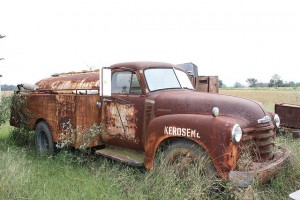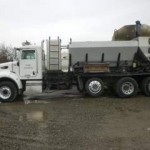 So an accountant and an equipment appraiser walked into a bar … the punchline would refer to a misunderstanding about depreciation, but depreciation in equipment appraisals is no joke. Mention depreciation to an accountant and the first thing that comes to mind is the depreciation schedule, whereby the value of fixed assets are reduced annually by a predetermined amount. To an equipment appraiser, depreciation means a real loss in value of the equipment, whether from physical deterioration, functional obsolescence, economic obsolescence — or all some combination of the three.
So an accountant and an equipment appraiser walked into a bar … the punchline would refer to a misunderstanding about depreciation, but depreciation in equipment appraisals is no joke. Mention depreciation to an accountant and the first thing that comes to mind is the depreciation schedule, whereby the value of fixed assets are reduced annually by a predetermined amount. To an equipment appraiser, depreciation means a real loss in value of the equipment, whether from physical deterioration, functional obsolescence, economic obsolescence — or all some combination of the three.
Physical deterioration is usually the most obvious of the 3 types of depreciation. Briefly, it’s the wear and tear that occurs when a machine or piece of equipment is used. For instance, physical deterioration is what an equipment appraiser takes into account when calculating the value difference between a brand new Case 580L Backhoe Loader and one with over 10,000 hours, a cracked cab window and low rubber. Age is part of what causes physical deterioration of equipment, but of course maintenance, use patterns and even climate also determine condition. Construction equipment stored near the coastline in Santa Barbara, for example, will usually suffer quicker physical deterioration than similarly maintained and used construction equipment in the Sacramento Valley.
Functional obsolescence and economic obsolescence also must be considered. Both of these forms of obsolescence cause a depreciation of equipment value, but it’s important to differentiate between them. Functional indicates some defect in the equipment or machinery — this could be anything from the simple fact that the machine is outdated, can no longer perform to capacity, or costs too much to operate. Typically this is caused when a newer machine comes onto the market that is more efficient — faster, easier to operate, takes up less space, incurs lower operating or repair costs, etc.
Economic obsolescence, on the other hand, has nothing to do with the particular piece of equipment, but is influenced by external factors, such as governmental regulations, or availability of labor or materials. For instance, the CARB diesel emission regulations facing diesel fleet owners is a perfect example of of economic obsolescence.
Here’s another interesting fact about depreciation from an equipment appraiser’s point of view: some of it is “curable.” Curable depreciation is any form of depreciation that is economically feasible to remedy. Consider a Palfinger hydraulic crane experiencing some physical deterioration or functional obsolescence that has decreased its value by $5,000. If the local crane repair shop assert that they can fix the problem for $3,000 max, the depreciation is considered curable. If the quote is $7,500, we might consider that “incurable.”
Jack Young, ASA, CPA
NorCal Valuation Inc.




